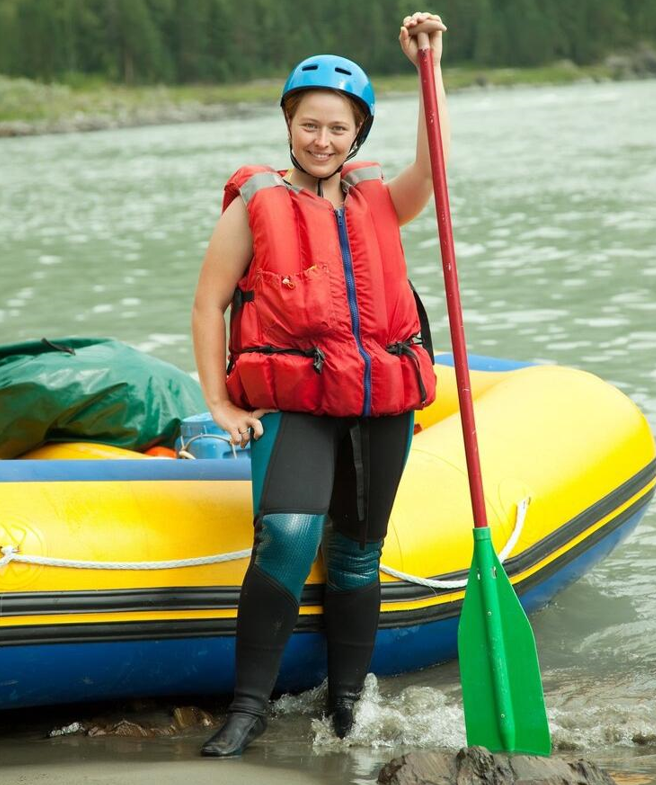Sailing is a thrilling and adventurous activity that allows individuals to explore vast bodies of water, experience the power of the wind, and discover new horizons. However, amidst the excitement, it is crucial to remember the importance of safety. Sailing inherently involves risks and hazards that can lead to accidents and injuries. This is why having the proper protective gear is of utmost importance.
In this article, we will delve into the significance of sailing protective gear, aka personal flotation devices (PFDs), exploring their role in preventing accidents and injuries, understanding the essential protective gear required, examining the protective gear regulations, and highlighting the significance of regular maintenance, training, and proper fit.
Table of Contents
The Role of Protective Gear in Preventing Accidents and Injuries
Sailing, like any adventure sport, comes with its fair share of risks and hazards. From unpredictable weather conditions to unexpected collisions or falls, the potential for accidents and injuries is always lurking.
However, by understanding the specific risks and hazards involved in sailing, we can equip ourselves with the proper PFDs to minimize the impact of any mishaps that may occur. Click here to learn more about sailing risks. Whether it’s a life jacket that keeps us afloat or a personal locator beacon that ensures we’re never truly lost at sea, PFDs play a vital role in preventing accidents and reducing the severity of injuries.
Below is a list of some essential PFDs for Sailing:
- Life Jackets and Personal Flotation Devices (PFDs)
- Harnesses and Tethers
- EPIRBs and Personal Locator Beacons
- Flares and Visual Signaling Devices
- Safety Knives and Tools
Safety Training and Education

While having reliable PFDs is crucial, knowing how to use them effectively is equally vital. Safety training programs designed specifically for sailors can greatly enhance preparedness on the water. These programs cover various topics, including the proper use of protective equipment, navigation techniques, weather awareness programs, and emergency procedures. Participating in such programs not only equips sailors with essential knowledge but also instills confidence and promotes a proactive safety mindset. Visit https://www.esafety.com/courses/severe-weather-awareness/ to learn more about weather awareness programs.
One of the best ways to prepare for potential emergencies is through practicing specific scenarios and safety drills. By simulating various situations, such as man overboard or fire onboard, sailors can become familiar with the necessary steps to take and execute them efficiently in a real-life emergency. Regularly conducting safety drills as a team also fosters effective communication and coordination, ensuring that everyone is on the same page when it comes to safety protocols.
The sailing world constantly evolves, with new safety practices, regulations, and technologies being introduced regularly. That’s why sailors must continue their education to stay updated on the latest safety practices.
Attending seminars, workshops, and conferences related to sailing safety can provide valuable insights and keep you informed about any advancements in protective gear and procedures. Staying proactive in your learning journey ensures you are always equipped with the knowledge to navigate the waters safely.
How to Choose the Right Size and Fit for Protective Gear
When it comes to PFDs, one size does not fit all. It is crucial to choose the right size and fit for each piece of equipment to ensure optimal protection. Ill-fitting life jackets or harnesses can be uncomfortable and may not provide the buoyancy or secureness needed during an emergency.
Take the time to try on different sizes and models to find the gear that fits you and your crew members properly. Remember, well-fitted PFDs will likely stay in place and serve their purpose effectively.
Considerations for Selecting PFDs Based on Sailing Conditions
Another important factor to consider when selecting PFDs is the sailing conditions you typically encounter. Different environments require different types of equipment. If you frequently sail in colder waters, investing in thermal protective clothing and immersion suits may be necessary. Click here for more information about thermal protective clothing.
On the other hand, if you often sail in rough seas, sturdy and well-padded helmets can offer extra head protection. Assess your sailing conditions and choose PFDs to tackle the challenges you may face on the water.
Upgrading Protective Gear for Enhanced Performance and Protection
As technology advances and safety standards evolve, it is essential to assess and upgrade your PFDs periodically.
Newer equipment models may offer enhanced performance features, improved durability, or additional functionalities that can significantly improve your safety on the water. Regularly research and consult with experts like Universal Safety Ltd to stay up to date with the latest advancements in protective gear. Investing in upgraded equipment when necessary, ensures that you are well-equipped to handle any unforeseen situations during your adventures.
Conclusion
As avid sailors, we are responsible for prioritizing safety on the water. Protective gear is crucial in preventing accidents and injuries, providing us with the protection and peace of mind to navigate the seas confidently. By understanding the essential PFDs required, adhering to regulations, conducting regular maintenance, participating in safety training, and ensuring proper fit, we can enhance our preparedness and minimize potential risks.
Remember, PFDs are not just an accessory; it is an indispensable component of every adventure.
Frequently Asked Questions
Can I use PFDs from other water activities for sailing?
While some PFDs may overlap between different water activities, it is essential to use PFDs specifically designed for sailing. PFDs are designed to meet specific requirements and provide optimal protection in sailing conditions. Using protective gear intended for other activities may not offer the same level of safety and may not comply with the necessary regulations.
Is protective gear mandatory for sailing?
While protective gear requirements may vary by jurisdiction and type of sailing activity, it is highly recommended and often mandatory to have certain protective gear on board. These include PFDs, visual signaling devices, and other essential safety equipment. It is important to familiarize yourself with the specific regulations and requirements of your sailing location or event.




























